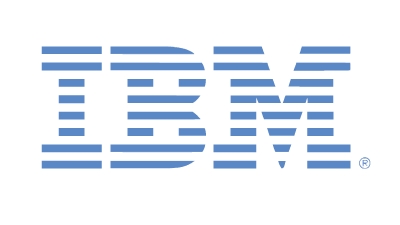Why a Risk-Reward Pricing Structure Isn’t Actually a Gamble
Submitted by Anonymous (not verified) on
Risk-reward pricing — the name alone implies the potential for loss.
Companies don’t want to take risks without a good chance of profit, and clients are often averse to risk-reward structures because they view them as win-lose scenarios. But this pricing model is less of a gamble than it seems.
When implemented wisely, it can result in a big payoff for everyone involved. The beauty is in its execution. A true risk-reward model aligns the interests of the professional and the client while enabling true financial accountability. And that’s a win-win.
The Risks That Make Clients Hesitate
Clients’ reluctance to opt in to a risk-reward structure can usually be traced back to a bad experience with this model. Sometimes, a company will sign up for an aggressive reward — not confident the professional will pull it off — only to be left surprised and unable to pay.
This happened at a consulting firm where I used to work. And although we negotiated an agreement and retained the client as a loyal advocate for our company, it served as a cautionary tale: For the risk-reward structure to work, everyone involved must be clear on the potential outcome and what’s at stake.
Clients aren’t the only ones who are reluctant to embrace risk-reward, though. If a professional gets the model wrong, it can mean lost profit at best — and financial ruin at worst.
The most extreme form of the risk-reward model is a success fee, where the professional only receives payment for the work completed upon successfully achieving pre-defined goals. The problem is that there are so many variables involved in ensuring that this happens. It requires a significant team output to get it right, and even when the team puts in all the necessary work, there’s still the potential of failure without compensation.
When interests or risks are imbalanced on either side of the model, there’s a high likelihood of lost profits (and potentially a lost relationship). But that doesn’t mean the risk-reward model should be dismissed.
When and How to Use Risk-Reward
Despite the concerns you or your clients may have, risk-reward can be the right pricing structure depending on the situation. It makes sense for both parties to use this model when:
● The client cannot see the outcome clearly, but the delivery team is confident it will see outsized results. The standard approach at my company is to have three to five times the fees put at risk as potential reward (based on a scale of success factors).
● Clients need to free up their budget with savings. This model works well when there are significant ongoing savings for clients that they’re willing to share over time.
● It allows clients to get work done that they otherwise could not afford. In these cases, the client has more to gain from the risk-reward situation than they would if the project had not been started.
These situations can be great for a risk-reward pricing structure, but you still shouldn’t jump right into this model headfirst.
Start by implementing bonuses for achieving results to understand what’s possible, and do your research. You can learn a lot by examining other industries for risk-reward performance metrics. (At my company, we looked at law firms and hedge funds to understand their processes, fees, and profits to shape our strategies.)
Once you’ve implemented an appropriate risk-reward model, do your due diligence and draw up an airtight contract. Define how results will be measured, the potential range of payment, and how disagreements will be mediated. Make sure everyone understands the terms of the contract completely to prevent the deal from going sour. Finally, invest in the right legal counsel to review the contract so you can identify any potential problems before you sign.
Risk Big, Win Big
A total risk model may seem outlandish to some, but forward-thinking executives know that with that great risk comes the potential of even greater rewards. Once, I negotiated a deal with a manufacturing client in which we assumed the entire risk in exchange for 40 percent of the annualized savings on a small project. We had to reach a 5-percent margin within a short period to earn the reward and would receive 60 percent (including bonuses) if we could get it to 10 percent in the same amount of time.
We dedicated several consultants, landed a margin between the hurdle and bonus rates, exceeded client expectations, and earned a far higher reward than we would have with our standard rates.
These kinds of deals are doable when your company has the right mindset and resources to take big risks. With clear benefits for both sides, both the client and the professional can profit handsomely and develop a mutually beneficial relationship.
Risk-reward doesn’t have to be a huge gamble; when done right, it’s an extremely lucrative bet.
Risk-reward pricing — the name alone implies the potential for loss.
Companies don’t want to take risks without a good chance of profit, and clients are often averse to risk-reward structures because they view them as win-lose scenarios. But this pricing model is less of a gamble than it seems.
When implemented wisely, it can result in a big payoff for everyone involved. The beauty is in its execution. A true risk-reward model aligns the interests of the professional and the client while enabling true financial accountability. And that’s a win-win.
The Risks That Make Clients Hesitate
Clients’ reluctance to opt in to a risk-reward structure can usually be traced back to a bad experience with this model. Sometimes, a company will sign up for an aggressive reward — not confident the professional will pull it off — only to be left surprised and unable to pay.
This happened at a consulting firm where I used to work. And although we negotiated an agreement and retained the client as a loyal advocate for our company, it served as a cautionary tale: For the risk-reward structure to work, everyone involved must be clear on the potential outcome and what’s at stake.
Clients aren’t the only ones who are reluctant to embrace risk-reward, though. If a professional gets the model wrong, it can mean lost profit at best — and financial ruin at worst.
The most extreme form of the risk-reward model is a success fee, where the professional only receives payment for the work completed upon successfully achieving pre-defined goals. The problem is that there are so many variables involved in ensuring that this happens. It requires a significant team output to get it right, and even when the team puts in all the necessary work, there’s still the potential of failure without compensation.
When interests or risks are imbalanced on either side of the model, there’s a high likelihood of lost profits (and potentially a lost relationship). But that doesn’t mean the risk-reward model should be dismissed.
When and How to Use Risk-Reward
Despite the concerns you or your clients may have, risk-reward can be the right pricing structure depending on the situation. It makes sense for both parties to use this model when:
The client cannot see the outcome clearly, but the delivery team is confident it will see outsized results. The standard approach at my company is to have three to five times the fees put at risk as potential reward (based on a scale of success factors).
Clients need to free up their budget with savings. This model works well when there are significant ongoing savings for clients that they’re willing to share over time.
It allows clients to get work done that they otherwise could not afford. In these cases, the client has more to gain from the risk-reward situation than they would if the project had not been started.
These situations can be great for a risk-reward pricing structure, but you still shouldn’t jump right into this model headfirst.
Start by implementing bonuses for achieving results to understand what’s possible, and do your research. You can learn a lot by examining other industries for risk-reward performance metrics. (At my company, we looked at law firms and hedge funds to understand their processes, fees, and profits to shape our strategies.)
Once you’ve implemented an appropriate risk-reward model, do your due diligence and draw up an airtight contract. Define how results will be measured, the potential range of payment, and how disagreements will be mediated. Make sure everyone understands the terms of the contract completely to prevent the deal from going sour. Finally, invest in the right legal counsel to review the contract so you can identify any potential problems before you sign.
Risk Big, Win Big
A total risk model may seem outlandish to some, but forward-thinking executives know that with that great risk comes the potential of even greater rewards. Once, I negotiated a deal with a manufacturing client in which we assumed the entire risk in exchange for 40 percent of the annualized savings on a small project. We had to reach a 5-percent margin within a short period to earn the reward and would receive 60 percent (including bonuses) if we could get it to 10 percent in the same amount of time.
We dedicated several consultants, landed a margin between the hurdle and bonus rates, exceeded client expectations, and earned a far higher reward than we would have with our standard rates.
These kinds of deals are doable when your company has the right mindset and resources to take big risks. With clear benefits for both sides, both the client and the professional can profit handsomely and develop a mutually beneficial relationship.
Risk-reward doesn’t have to be a huge gamble; when done right, it’s an extremely lucrative bet.






